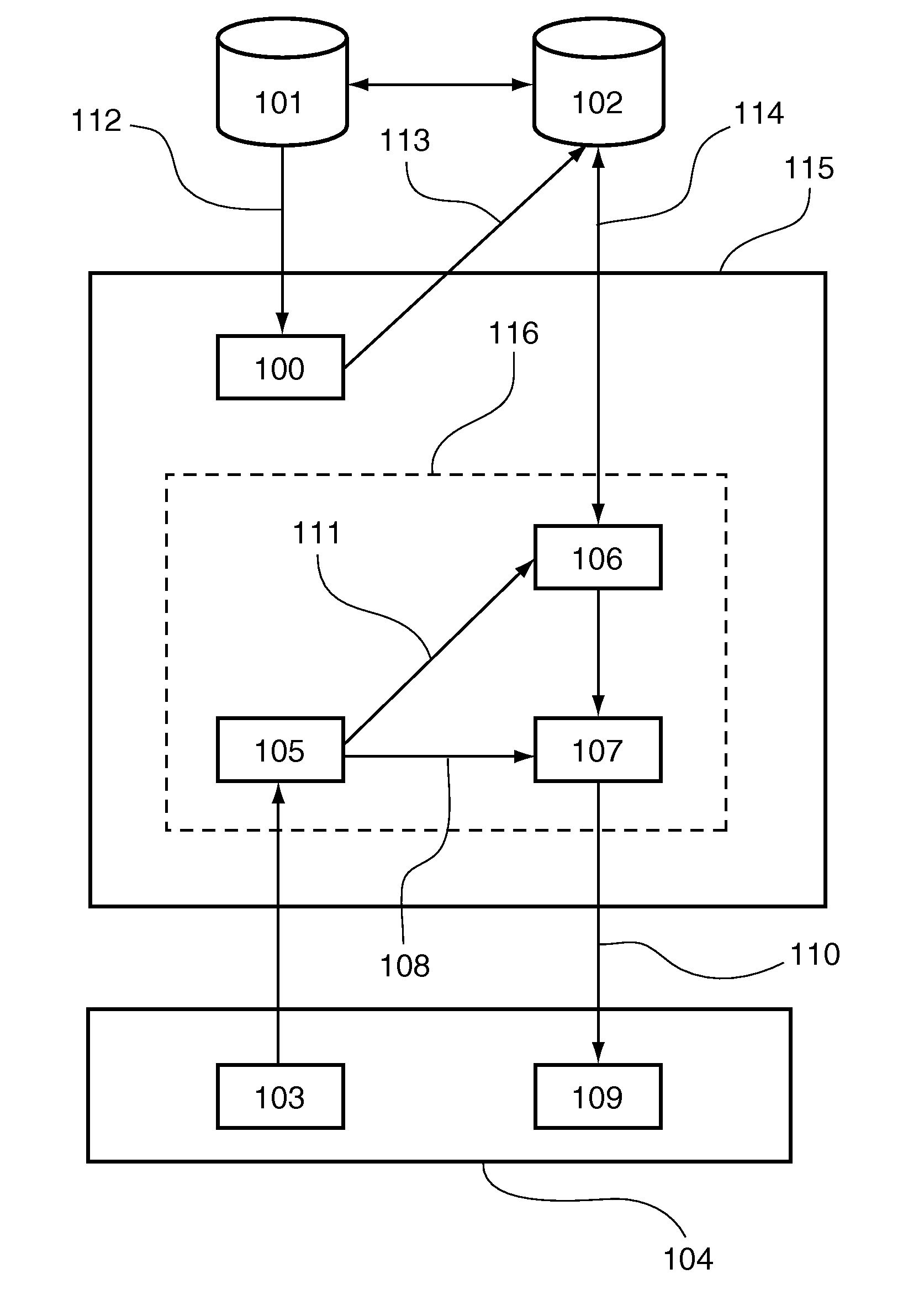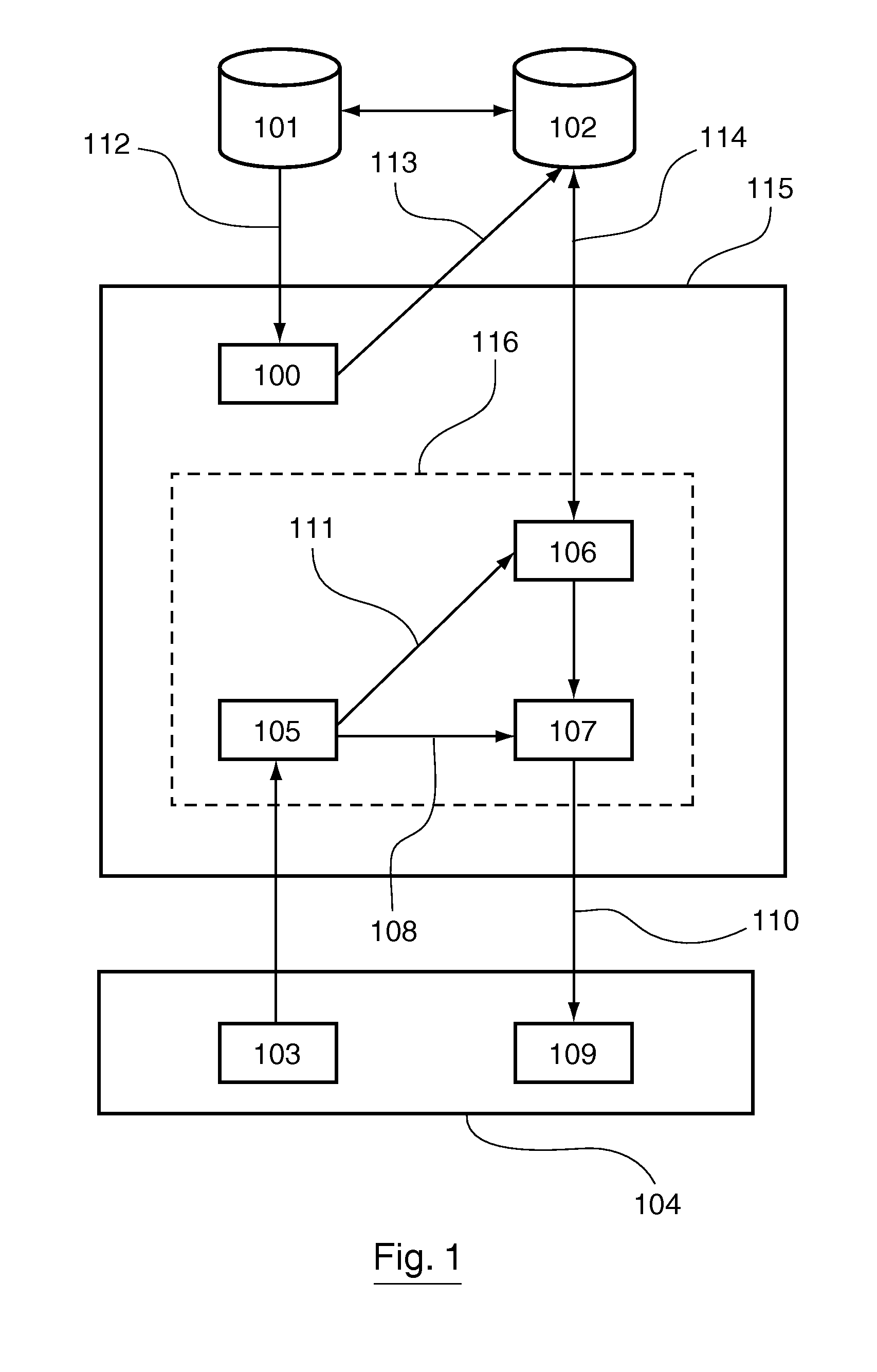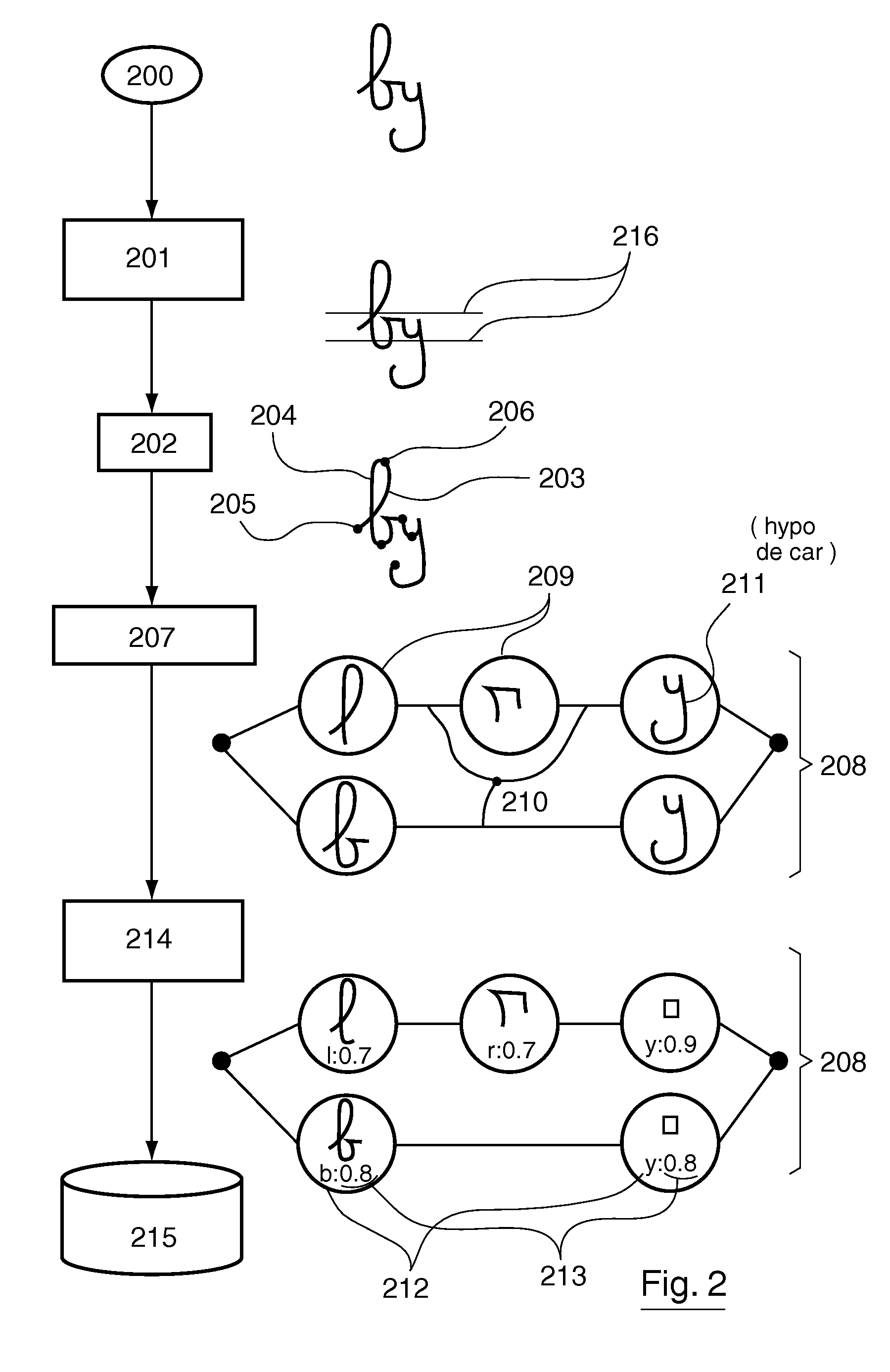The first two approaches are, of course, heavy and demanding in terms of their load on the processor (CPU) and memory.
They do not enable efficient
processing in a reasonable period of time.
Thus, it introduces a bias, since the conversion is limited to one language, and to the terms actually present in the
lexicon.
One difficulty with search processes lies primarily in the fact that the data that is searched for in stored documents is not always of the same nature as that used in the
query language.
Such recognition systems are known, which are most often based on complex
computer processing on the other hand requiring significant
processing capabilities, which are highly demanding in terms of the processor (CPU) and
memory load.
Thus, a first
disadvantage of these recognition systems of the prior art relates to the necessity of using a
lexicon with often fixed and limited contents, in terms of the quantity and meaning of the words that it contains.
Furthermore, the use of such a
lexicon entails a significant limitation in terms of the quality of the search result, this result necessarily depending on the language, the comprehensiveness and the scope of the lexicon.
For this reason, the recognition techniques of the prior art, at least in some cases, return mediocre results, and neither do they enable searching for proper names, company names, or any other chain of characters or symbols that may have been written into the ink documents considered in the search but not present in the lexicon.
Furthermore, the use of a lexicon in the recognition phase most often produces relatively long response times in
processing the request and in returning the search results to the user.
Although improving the
response time for processing the search and / or for the recognition process, these techniques of the prior art prove to be disappointing in terms of the quality of the recognition.
Furthermore, they are limited in terms of search capabilities.
The
advantage of these known techniques of the prior art is therefore severely limited to searching in previously stored and lexicographed documents, which stand in the way of a natural and extensive use of systems for searching and recognising in ink documents, e.g., for the purposes of querying a company document
database, a document
system, etc.
Finally, due to the lexical approach that they impose, another
disadvantage of these search and recognition systems relates to their incapability of mitigating an alteration of the contents of a document, which might have occurred at the time it was stored, or else even mitigating an error and / or an approximation of the input of the request made by the user.
In summary, the known search and / or recognitions techniques of the prior art have substantially five types of disadvantages:1. Problems related to the word segmentation of ink documents the use of which is liable to cause errors during the search phase.2. Problems related to the lack of comprehensiveness of the indexing file, due to the conversion of the data into elements belonging to a lexicon, capable of producing situations in which a user search request cannot be recognized, e.g., due to a spelling or keystroke error, or due to inputting proper or company names, or acronyms;3. Problems peculiar to poorly executed recognition of ink documents, resulting in the creation of a faulty indexing file the use of which is liable to cause errors in the phase of searching for poorly recognised words.4. Problems related to the user request, which does not make it possible to overcome the linguistic constraint but which, on the contrary, must be input in the same language as that of the lexicon.
Correspondingly, any search launched on the basis of a user request, which does not observe the same linguistic constraints as those of the indexing file, will not be able to be processed by the
recognition system.
This last problem probably constitutes one of the primary barriers to a more natural and extensive use of the systems for searching and recognising in ink documents;5. Problems related to the impossibility of being able to perform advanced searches on the basis of a request input in a higher level language, of the
regular expression type, for example, for the purpose of more fully formalising the contents of the request from which the processing of the search may be carried out more quickly, while at the same time providing the user with a higher degree of quality with respect to the results returned.
Furthermore, it is to be noted that, for the most part, the above-listed disadvantages apply similarly to voice recognition.
 Login to View More
Login to View More  Login to View More
Login to View More 


